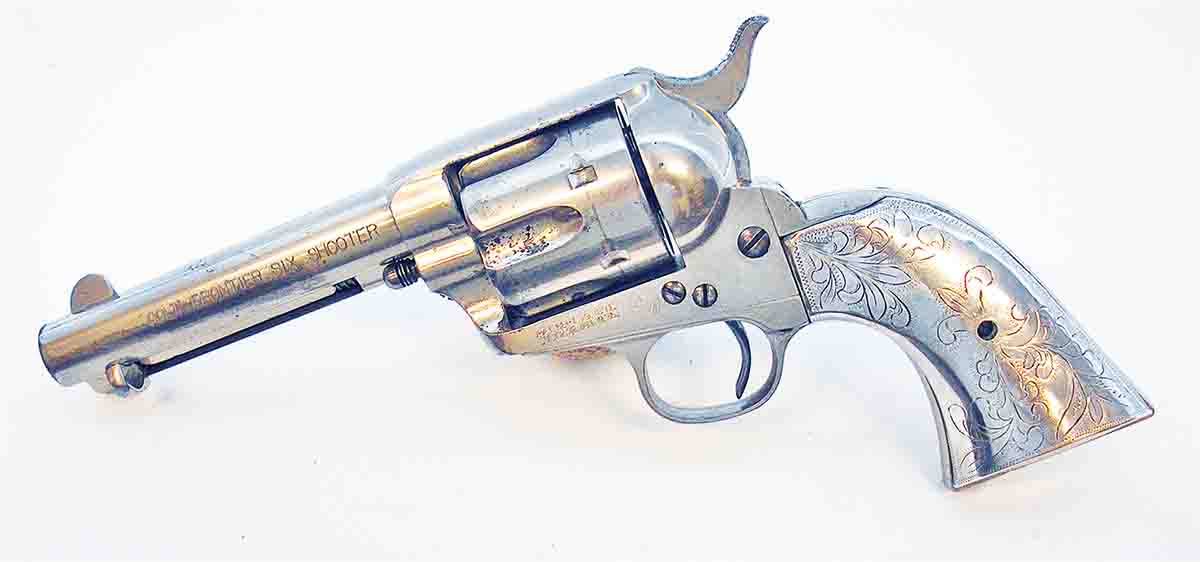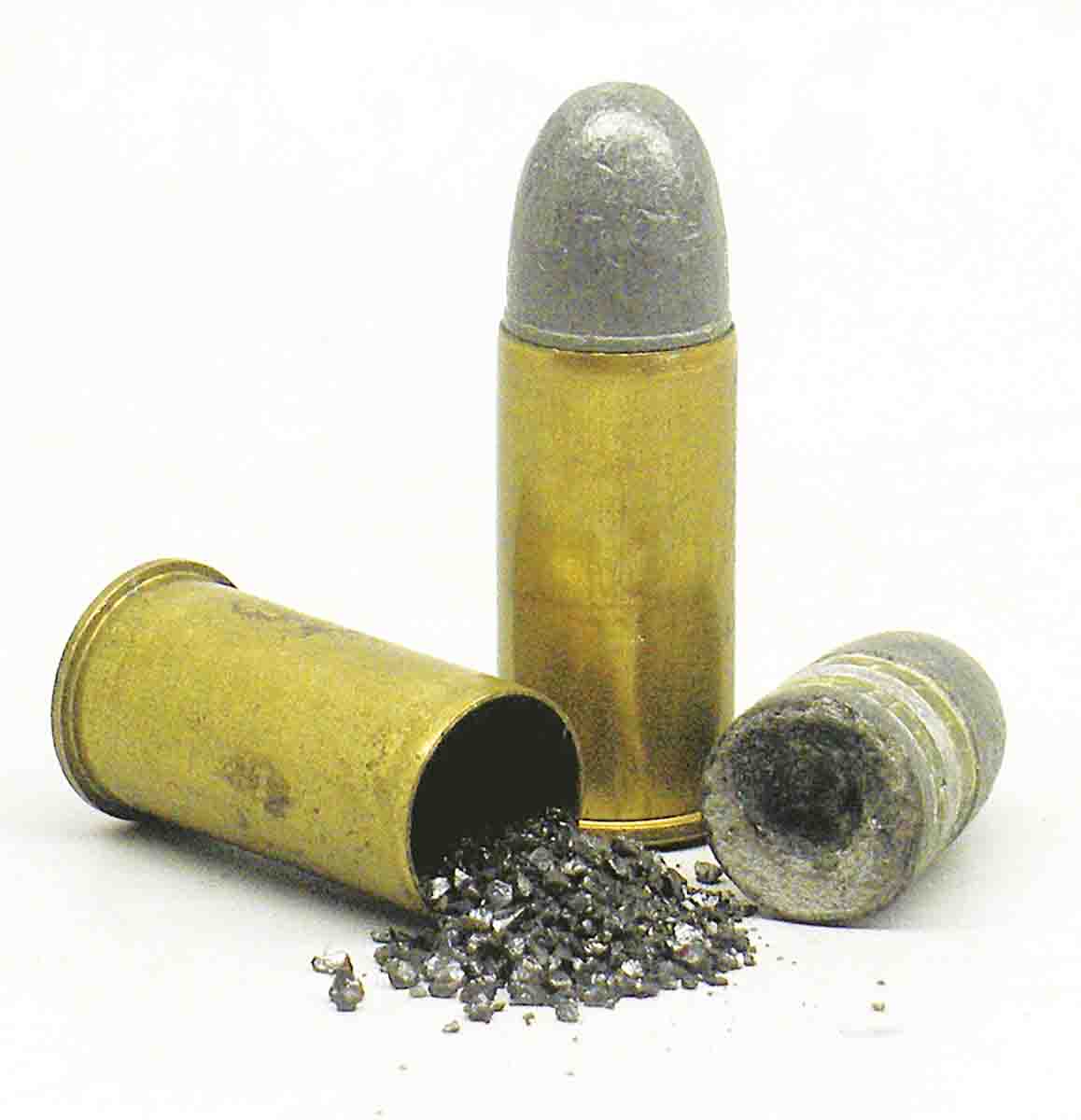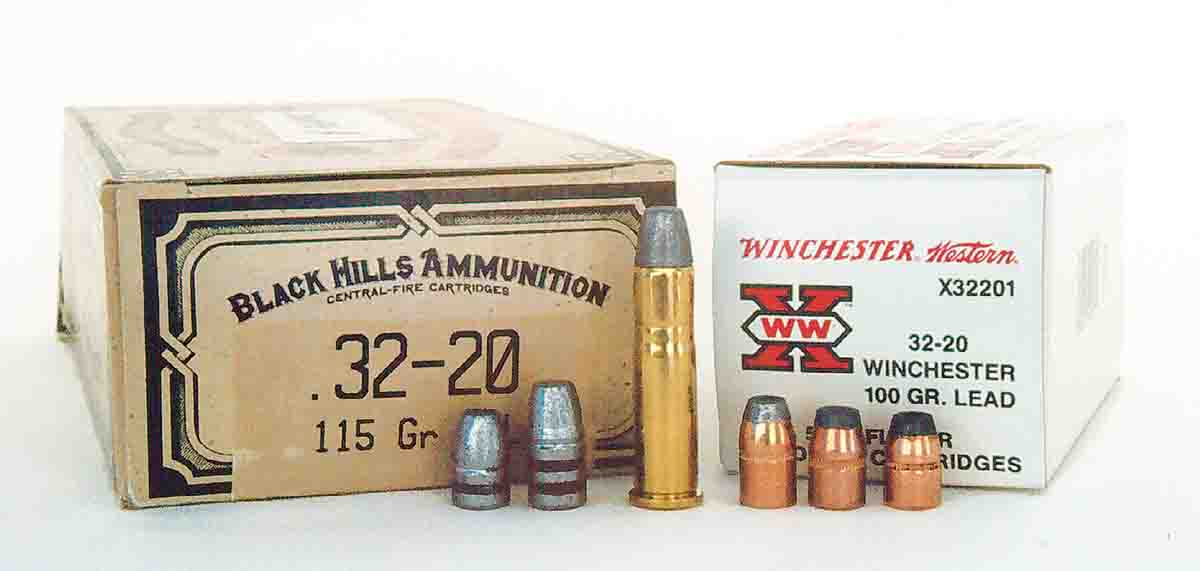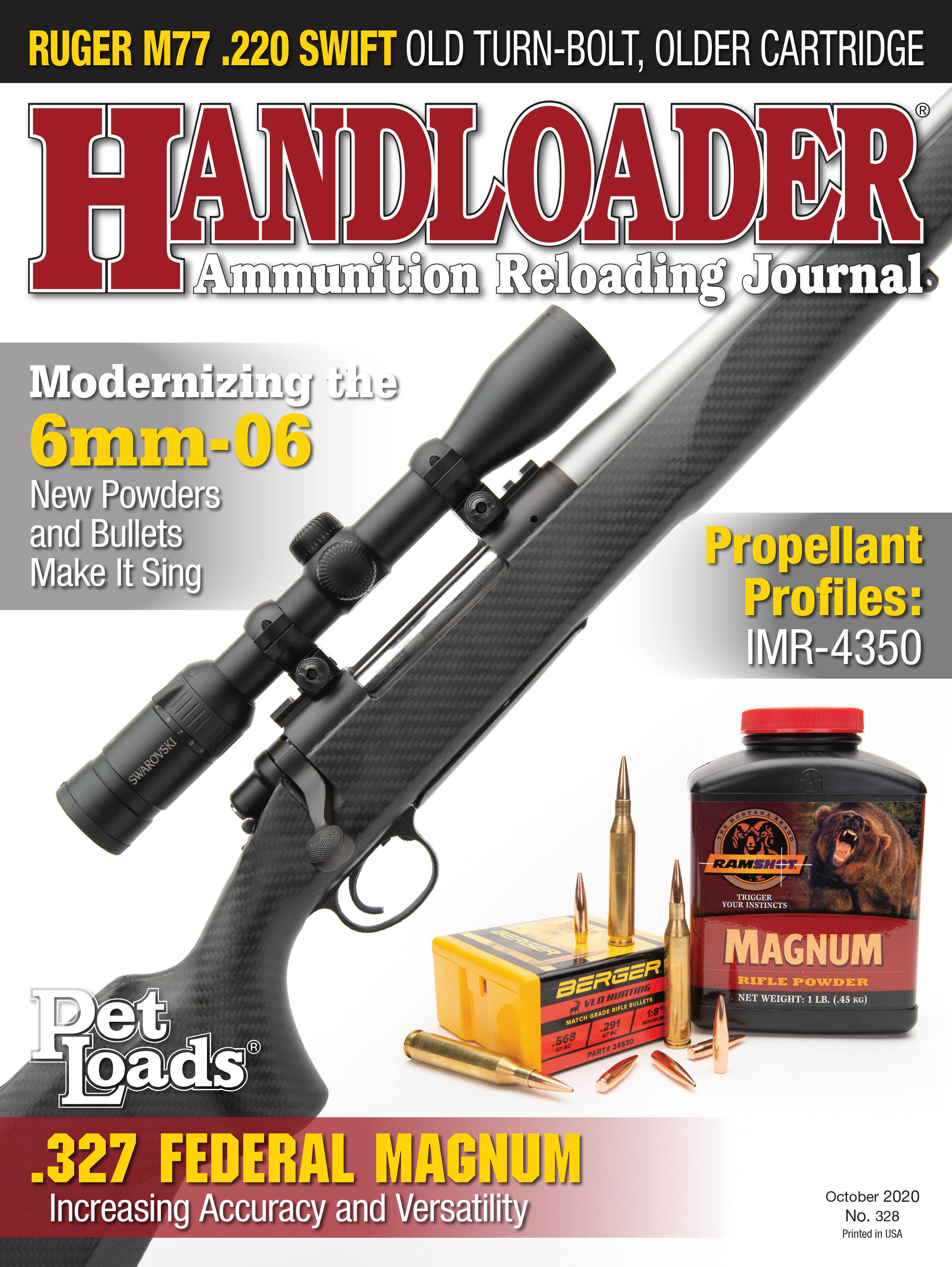Reloader's Press
There Are No .32, .38 or .44 Calibers
column By: Dave Scovill | October, 20

To continue with the subject at hand, the most interesting fact regarding the modern crop of .44-caliber handguns is that none of them are .44s. Moreover, way back in the beginning, those Colt and Remington .44 percussion revolvers were actually .45s. It’s enough to make you wonder about the words to that old Gene Autry song, “Back in the Saddle Again,” “. . . ridin’ the range once more, totin’ my old 44 . . .” What .44 was he singing about?
Research indicates there was only one .44, the .44 Colt, that was manufactured by Frankford Arsenal in the early 1870s, in which the heel bullet measured on average .444 inch at the rearmost edge of the nose immediately ahead of the case mouth. According to Charles Suydam’s U.S. Cartridges and Their Handguns, the powder charge and bullet weight in the commercial versions of the .44 Colt varied a bit, but the diameter was fairly consistent. The heel of the bullet seated inside the case neck was closer to .429 inch.

The Colt revolver was a Richards Model 1871 conversion and the Richards-Mason 1872 improvement of the Colt percussion 1860 .44 Colt with a .45-caliber barrel. The Remington Model 1863 .44 sixgun was also a throwback to the Civil War configuration with the .45-caliber barrel.
The Uberti Model 1871/1872 replica appears to be an amalgamation of the two 1860 conversions with a .429-inch barrel groove diameter and a cylinder chambered for a .44 Colt case made by Starline that is little more than a shortened .44 Special case, or slightly longer .44 Russian, albeit with a slightly smaller rim diameter.
The other two so-called .44 calibers in the mid-to-late 1860s were the American and Russian with .438- and .429-inch bullets, respectively. There has been some debate as to whether the first Russian loads were outside or inside lubricated, but according to collectors there was indeed an early outside lubricated version, though it hardly matters since samples in both variations measure .429 inch, give or take. For general information, if you just happen to have a Smith & Wesson .44 American, brass can be made from .41 Magnum brass.
There were also Smith & Wesson and Colt .44 rimfires, the latter being the Henry cartridge, pointed and flat, with bullets that measure from .418 inch to the mid-.44s. No one seems to know the diameter of the S&W version. Colt converted 1,800 1860 Colts to fire the Henry loads that, according to Charles R. Suydam in his book mentioned above, were discontinued by the mid-to-late 1920s.
The misfit in the so-called .44 lineup was and still is the .44 WCF, aka .44-40 Marlin, Remington or Colt Lightning Magazine Rifle (CLMR) that started out as .427 inch plus/minus and has not changed, albeit some rifle and handgun manufacturers offer barrels that measure closer to .429 and/or .430 inch in spite of the .424- to .427-inch bullet diameter in post-World War II Remington and Winchester, respectively, factory loads. Either way, Colt .44 S&W Special and .44 WCF barrels measure .427 inch, and Colt chambers for the latter cylinders will normally not accept a loaded round with a bullet diameter larger than .428 inch.
Smith & Wesson barrels for the .44 Remington Magnum and .44 S&W Special measure .429 inch, albeit bullet diameters vary from .429 to .430 inch in most factory loads. As a rule then, all so-called .44-caliber revolver bullets are roughly .43s.
Finally, to add a bit more confusion to the legacy of the .44s, most percussion revolvers of the Civil War period up until the advent of self-contained cartridges were .45 caliber that were commonly referred to as .44s that fired a .451-inch round or conical lead ball. Since there weren’t any real .44s in the first place, no one seemed to care.
Next up are the .38 calibers, of which there have been none since the 1870s that featured outside lubricated bullets measuring on average .378 to .380 inch. After 1905 or thereabouts, the .38 Long Colt outside-lubricated bullet became an inside-lubricated bullet that measured the same as the inside case neck diameter, .357 inch. With one exception, all .38s have been .35s or, if you prefer, .357 calibers ever since. The exception is the .38 Smith & Wesson, aka Police Special, with a bullet diameter of .360 inch. Some scribes have written that the .38 S&W can be fired in .38 Special revolvers, but the former is tapered and a bit too fat to fit in the latter.
Oddly enough, the only cartridge that has been on the books as a .38 since the late 1800s – and is still called a .38 but is actually a .40 caliber – is everybody’s favorite, the .38 WCF, aka .38-40 Marlin, Remington and CLMR. The “oddly” part is that I received a letter a number of years ago from Harold McCallum, the well-known Winchester rifle collector, that stated Winchester did not use the powder charge number, e.g., .38-40, until long after World War II, even though everybody else did and seemed to be confused by powder charges and bullet diameters. No one seems to know why it was called a .38 but have no reservations about guessing why it was apparently mislabeled on purpose. Is that an oxymoron?

While I’m at it, according to Charles Suydam, et. al, there was also a Smith & Wesson .41 sometime between 1890 and 1910, but the bullet was .373 inch. Ponder that during recess from homeschooling the children, cleaning the garage, painting bedrooms, mowing the lawn or watching old movies.
The .32 calibers can get a bit complicated, so what follows are the basic rules. Back in the 1860s or so, most .32-caliber factory loads for the .32 Long (New Police) and Short Colt used outside-lubricated, lead-alloy bullets measuring, on average, .317 inch. That was followed by inside-lubricated bullets that averaged around .308 inch. When the .32 S&W Long was introduced around 1896 or so, inside-lubricated bullets measured from .308 to .312 inch. When Winchester introduced the .32-20 in 1884, inside-lubricated, lead-alloy bullets measured from .308 to .311 inch.
Lead-alloy bullets pulled from relatively recent .32-20 Winchester and Remington factory loads measure .312 and .310, respectively. The Speer Reloading Manual Number 13 lists a 98-grain lead wadcutter and a 98-grain, lead-alloy SWC, both at .314 inch, and a 100-grain JHP at .312 inch. Can we logically assume the bullets pulled from factory loads were slightly larger in diameter prior to seating?
Where so-called .32-caliber bullets appear to range from .309 to .317, we can’t make the same assumptions regarding barrel diameters of revolvers or rifles. For example, a circa 1922 Colt Single Action Army .32-20 has a barrel groove diameter of .314 inch, and all six chamber throats measure .314 inch as well. Conversely, a .314-inch bullet pulled from a Winchester factory load requires only a slight amount of push from a cleaning rod to pass nearly friction free through the barrel of a circa 1884 Winchester Model 73 .32-20 rifle that shoots minute- of-cottontail at 50 to 75 yards with the same load.
Then Thompson/Center decided to make a run of .32-20 barrels for Field Pistol competition. Apparently, Field Pistol competitors were unhappy with the bullet selection in .32 caliber for their pet sport, and someone convinced T/C to make those barrels with a .308-inch groove diameter to facilitate a larger range of bullet designs in that caliber. Given the historical record for .32-caliber handgun cartridges, we can assume the standard bullet diameter should be .314 inch or so, but as the late Al Miller used to opine, larger is better, or unsized up to .316 inch if the cartridge will chamber.
Winchester and Remington continue to offer factory loads with lead-alloy bullets that are apparently designed to “bump up” upon firing and form a closer fit in the barrel, which has averaged historically around .314/5 inch, but reduced to .308/9 inch for T/C barrels. Either way, in the last 120 years or so, there have been no .32s.


